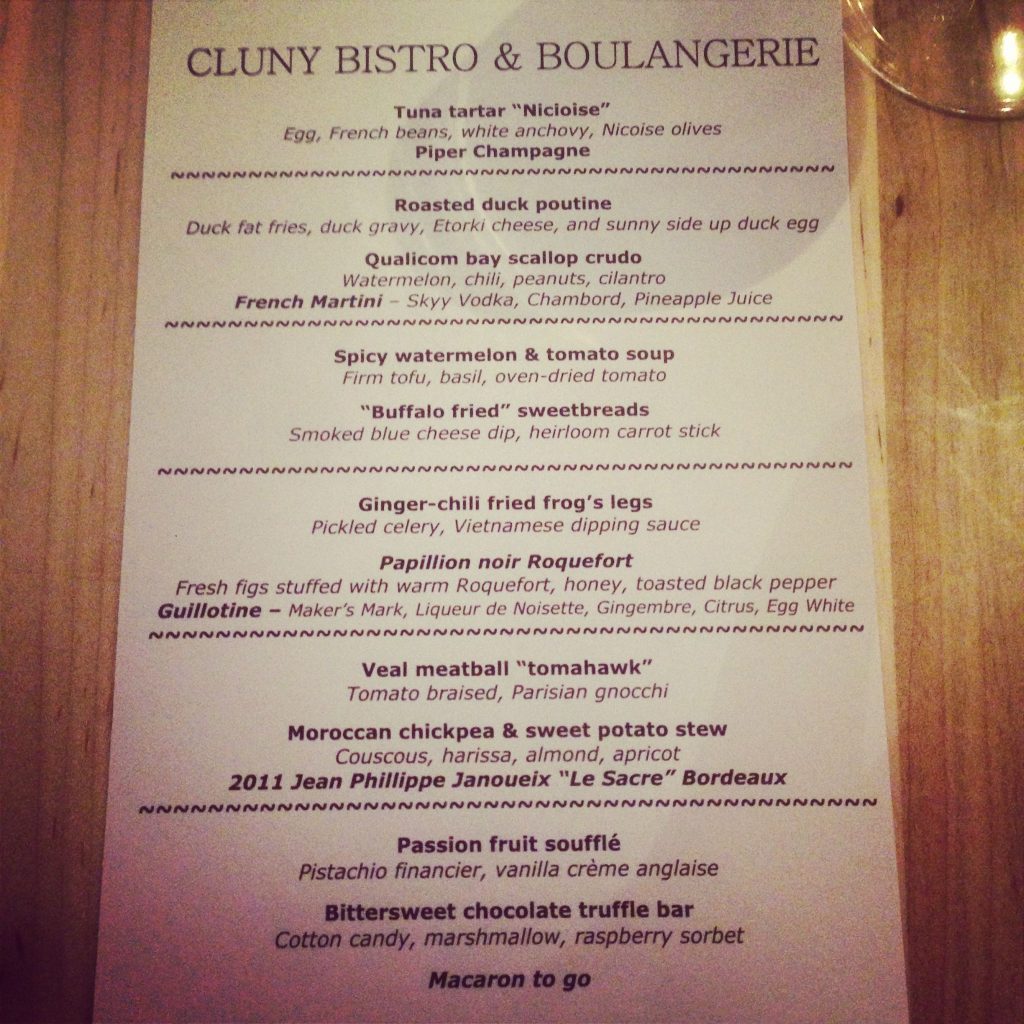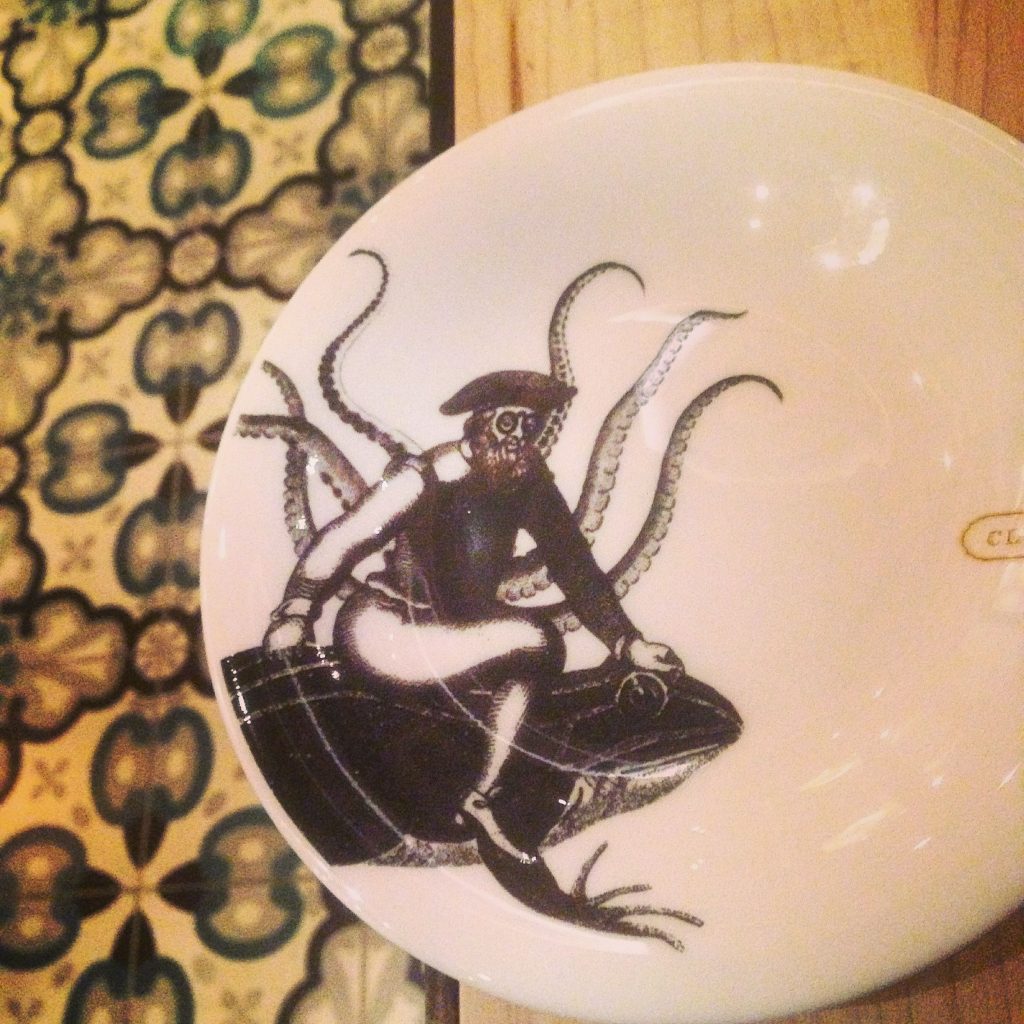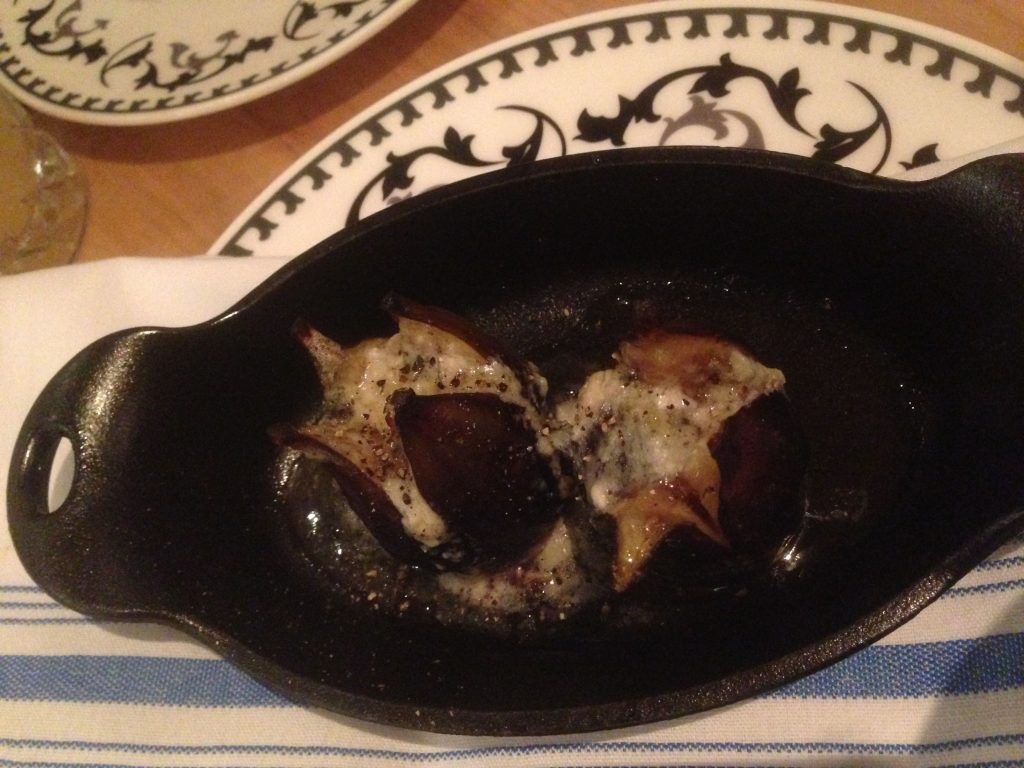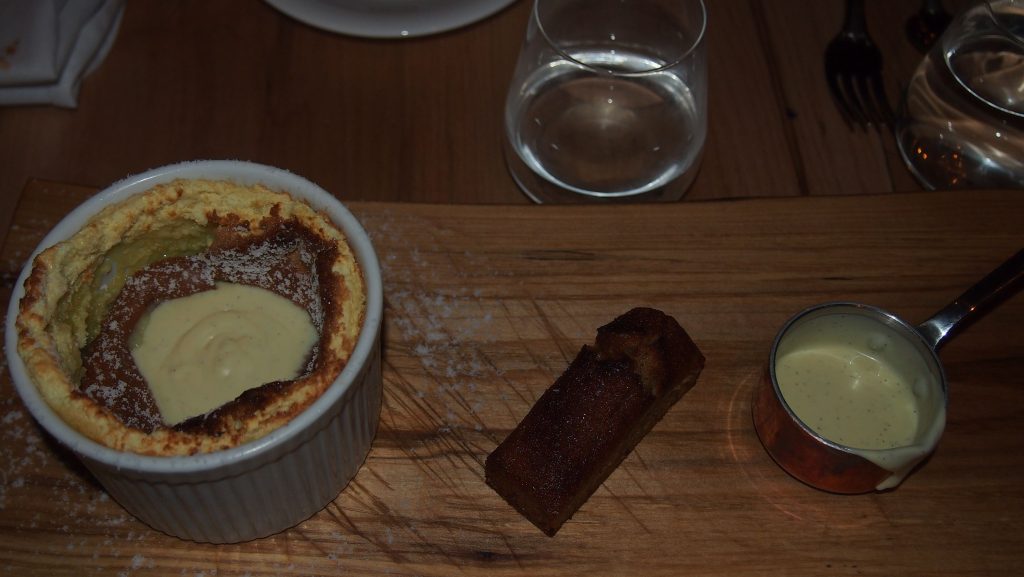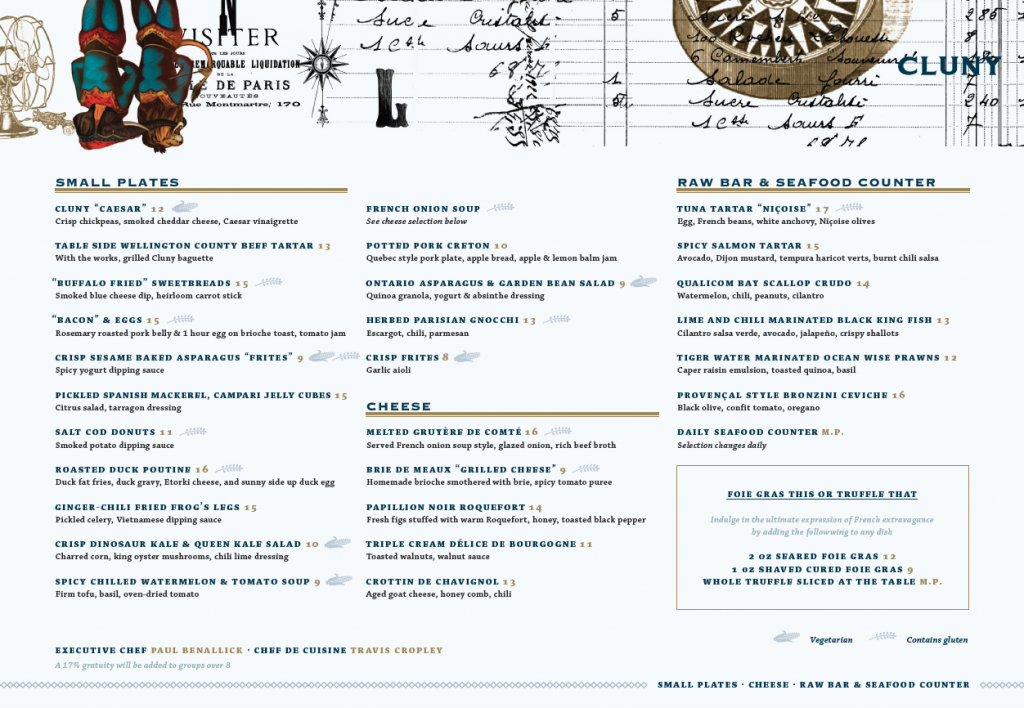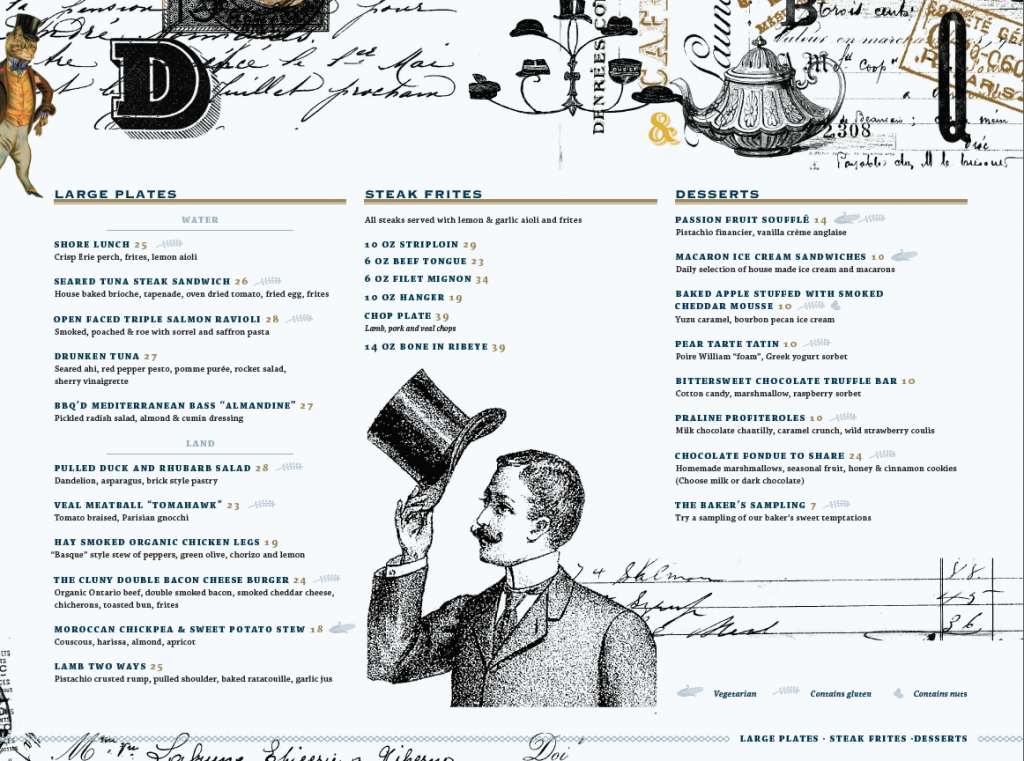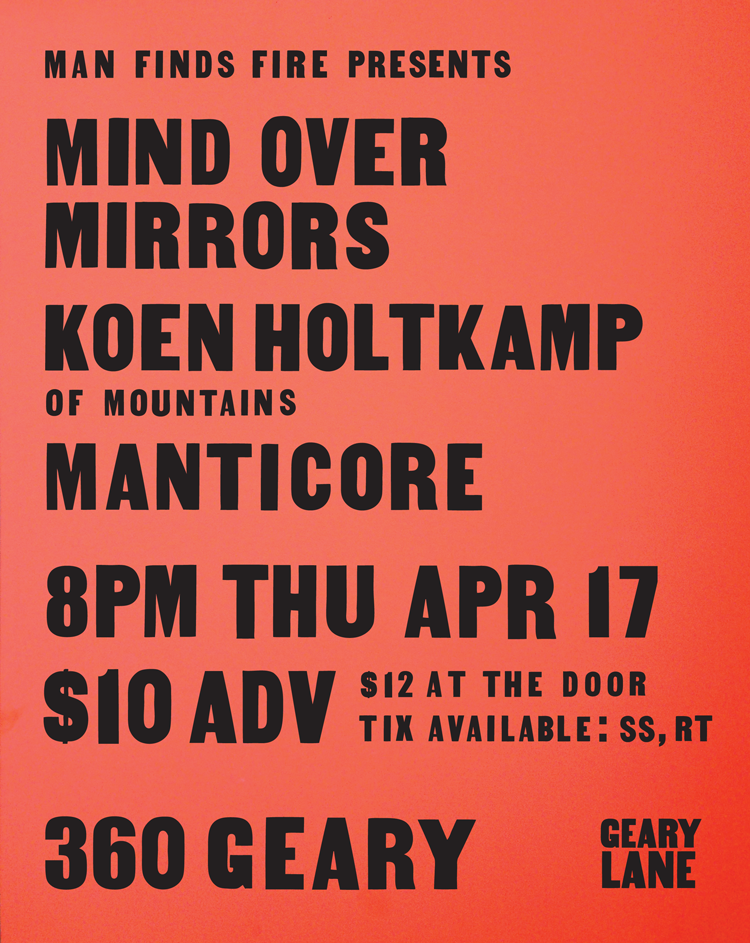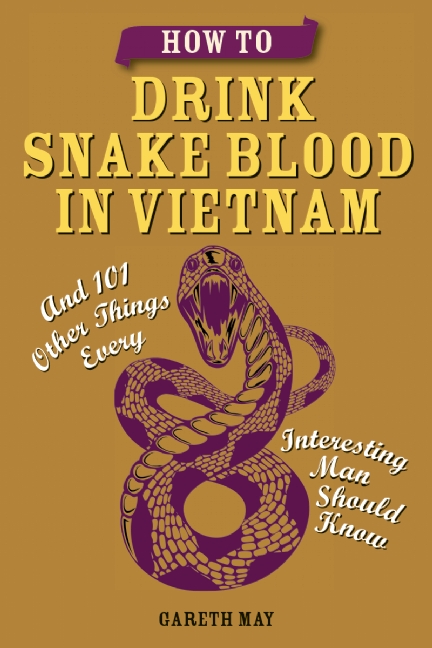Green Works Muddy Puppy appearance
https://www.youtube.com/watch?v=pSmP4UjqGZI
ACTRA group rate background guys have all the fun. This was actually a hilarious commercial to be on. They told me my reaction was priceless, and it made the final cut! I’m wondering if this demands an upgrade. Hmmmm….
31/10/2014 UPDATE: I was actually close to an upgrade (yes!) but I didn’t meet all the qualifications (boooo!) At least the ACTRA stewards were cheery about it and got back to me lightning fast! Who doesn’t love a good puppy vid, right? #YourUnionAtWork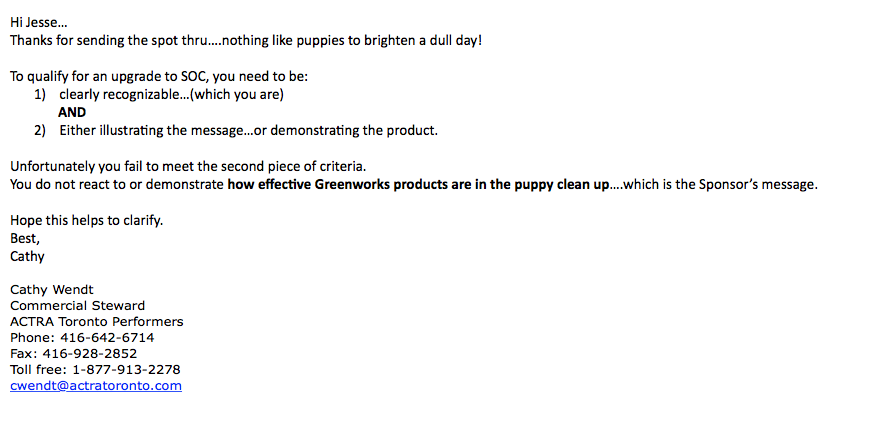
Banned from BuzzFeed: 10 Ways To Spot An Asian From Asia VS An American-Born Asian
10 Ways To Spot An Asian From Asia VS An American-Born Asian
Asians can be from Asia. Asians can also be from America or any other Western country that their families emigrated to several generations ago. Besides an accent, can you tell the difference? #thereisadifference #westernasianposted on Oct. 28, 2014, at 3:14 a.m.
1. At the beach
Asian-Americans: They tan, swim, do a variety of water sports and are not afraid to come out during high-sun.

Asians from Asia: can easily be mistaken for a Mexican Lucha Libre wrestler. Due to their fear of the sun, they come out at dusk and use umbrellas as an extra safety precaution. If they do go in the water— it’s typically at most waist length.

2. Matching Couples Outfits
See an Asian couple with matching outfits?
Asians from Asia: match outfits with their significant other in any public setting for any occasion

Asian-Americans: only appropriate if you’re a team on Amazing Race or going to a bar/event to support the same sports team.

4. Travel Snacks Packed in their Suitcase on Vacation
Western Asians and Asians from Asia pack drastically different emergency travel snacks.
Asian-American Travel Snacks: Granola Bars, Potato Chips, Trail Mix, Protein Bar or Pocky/Hello Panda cookies as an homage to their Asian heritage

Asians from Asia Travel Snacks: Ramen, Hot Tea Bags, Anything that you can add hot water to create an instant meal just in case their complimentary meal on their pre-paid tour tastes like garbage

5. Asian Men’s Hairstyles
Like fashion, cultural differences also exist in hairstyles.
If you see an Asian guy over 18 with a razor-shag + side-swooped bangs reminiscent of Justin Bieber circa “Never Say Never”, he’s most likely to be an Asian from Asia.

Typical Asian-American Men’s Hairstyles for 18+: the fade, the fauxhawk, the buzzcut, slicked-back waves or the classic short-hairstyle

6. Recreational Sports
Asians from Asia and Asian-Americans share many of the same recreational pastimes (e.g., karaoke, grabbing bubble tea). However— sports is another issue..
Asians from Asia: enjoy playing popular British non-contact sports such as Badminton, Cricket and Ping Pong.

Asian-Americans: will only play Badminton/Cricket/Ping Poing with their 10-year old niece— being bored at a family backyard BBQ while holding a beer in their left hand.
For the most part, you can find them recreationally playing most contact sports like basketball, football, tennis or soccer.

7. Men’s Bags
Even Asian men’s accessories vary from east and west…
Typical Asian-American Men’s Bags: Bookbag, Messenger Bag, Duffle/gym bag, Breifcase, Laptop bag issued by employer, Totes (to only be used for the beach or grocery shopping)

Asians from Asia: Totes (not to be used for the beach or grocery shopping), small satchels, big short-handle bags or clutches that can be mistaken for a woman’s purse.

8. Asian Women’s Cell Phone Covers
Is her phone cover bedazzled/bejeweled and she’s over the age of 12? She’s most likely an Asian from Asia.

9. Taking Photos
In general, Asians of all backgrounds love taking photos. But Asians from Asia can be easily identified by their strong tendency to take obtrusive photos with no regard to their surroundings. For example:
Whipping out their selfie-stick in the middle of a busy street during rush hour or at a crowded restaurant

Or awkwardly squatting low or in fetal-like position with their DSLR

10. Calling Out Racism
Are you using the words “Oriental” and “FOB” to refer to Asians?
If so, you have likely offended most Asian-Americans and called out as a racist on Twitter.
Asian-Americans immediately let others know when something is racist, culturally appropriated and/or offensive to the Asian community via social media. Discourse amongst Asians from all backgrounds ensue if it’s actually racist.

Notably, Asian-Americans are also more likely to call out if something is racist towards other races as well.
Now— let the discourse begin…
Cluny Bistro & Boulangerie in The Distillery
I write this as I pick over my leftovers/doggy bag from the feast at Cluny Bistro & Boulangerie,wishing I had a flute of Piper champagne to accompany it. Cluny’s is a new French experiential restaurant/boulangerie/patisserie tucked away in the alleys of Toronto’s Distillery. The kitchen is run by executive chef, Paul Benallick whose grandiose resume includes positions at Canoe, Auberge du Pommier, the Trump Hotel, and his own Yorkshire UK resto partnership, Truffle’s Cottage, voted twice as Yorkshire’s Restaurant of the Year.
After the 9-12 course meal, preceded by a wedding-style speeches from a podium, my table (Lisa of Eat Drink Travel, Ama of the Fat Girl Food Squad) was graced with the presence of owner and Distillery developer Mr. Matthew Rosenblatt, who stressed that the emphasis of his new darling was on modern and fun with a capital F. That’s F as in French too. While the airy lighting at decorative tiles may give the impression, this is not your typical bistro. That’s been done over and over, and Cluny is in no position to compete with Patria or say, Biff’s. Cluny is about sharing interesting dishes and modern and accessible French dining.
I am lactose intolerant, so fearing the worst as French cuisine is notoriously heavy in cremes and butters, I had my Lactaid in hand, but found it only in use until dessert. True to Matthews word, the cooking style was very modern, and I didnt start popping them until we reached the Roquefort stuffed figs and, the epic dessert finales, passion fruit soufflé and the bittersweet chocolate truffle bar served with fragrant cotton candy, marsmallow butons and raspberry sorbet.
Cluny is a unique place where chicken wing-styled ginger-chili fried frogs legs are picked apart along side duck poutine with the meatiest thick cut slabs of French fry I’ve ever eaten. So the curds were a tangy Etorki, but served in a cast-iron pan, topped with a fried egg. Again, the emphasis is on experience, mainly the experience of French cuisine but from a global perspective, hence the quebecois poutine, fried frogs legs (a staple in parisian viet restaurants that I used to go to as a child growing up in Neuilly), Moroccan tagine, soufflés with creme anglaise, and many others. If you’re looking to impress or celebrate a special occasion, Cluny’s should be the next go-to must-try on your list.
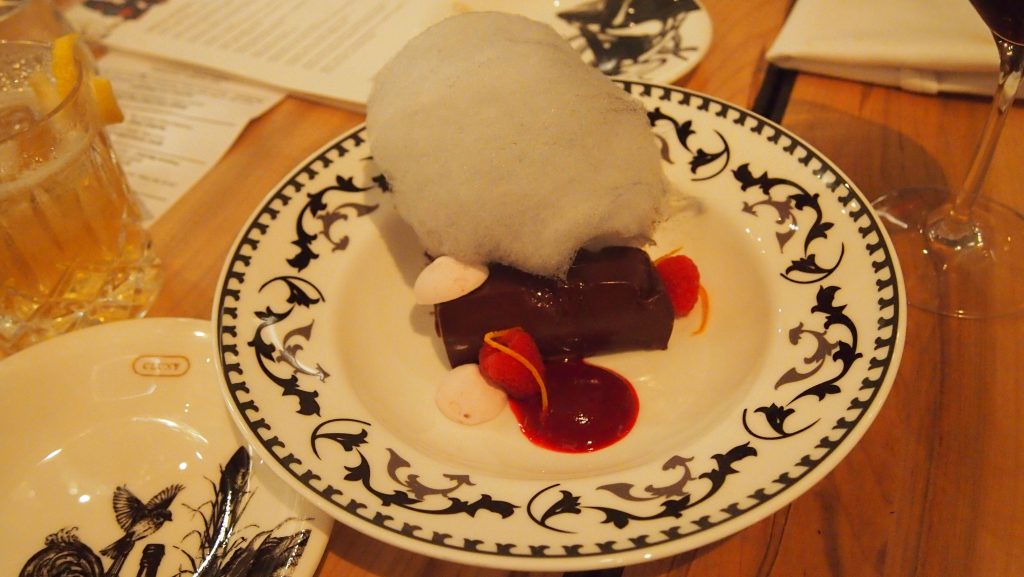
Bittersweet chocolate truffle bar with fragrant cotton candy, marshmallow coins and raspberry sorbet
Sunrise and Good People
I WON’T FALL DOWN from SUNRISE and GOOD PEOPLE on Vimeo.
You never know who you’re going to meet or what new bands you’re going to discover when you take part in Canadian Music Week.
Although they were not on site this year, I was still happy to discover Sunrise and Good People, an emerging Montreal-based psych-rock or “tribal band. Formed by lifelong friends, Eric Bolduc and Xavier Auclair they have seen the world from Europe to East Africa, as well as the Himalayas. Perhaps they made some powerful connections whilst in the mountains because they were recently granted an audience with the Dalai Lama during a public talk in Ottawa a few years ago, and had the honour of playing the beautiful Tibet-based music video for his Holiness along with 7,000 other people.
The truly tribal ‘Closer To The Flame’ was shot in Tahiti last month. Take a look at what a wonderful life we could have if the constraints of clothing had not existed! ;) #NoPants
From what I’ve been told, the band is being closely watched by some high-level industry heads, and should be one to watch for in coming months!
CLOSER TO THE FLAME from SUNRISE and GOOD PEOPLE on Vimeo.
The Art Of The Wind Rises – Miyazaki
I’ve not yet seen Miyazaki’s supposed grand finale and animation masterpiece “The Wind Rises” but VIZ Media has proudly released the art book to accompany the acclaimed fictional biopic of Jiro Horikoshi, the designer of Japan’s Zero fighter plane.
“The Wind Rises is an epic story set during an important era in Japan’s history, and we very excited to complement Miyazaki’s landmark film with the release of this wonderfully illustrated new hardcover art book,” says Masumi Washington, Senior Editorial Director. “THE ART OF WIND RISES captures the evolution of the designs and characters that brought this captivating story to life. Join us to celebrate the work of one of the world’s most visionary animation directors with this new release from our Studio Ghibli imprint.”
Not only is the hard-backed 280 page tome filled with lush illustrations and eye popping colours from the historical manga, but it also includes the full script as a bonus! A must have for the Miyazaki completist.
Top 4 things to remember when making a Belvedere Martini
1. One of the first recorded martinis was actually called the “martinez” and is generally not favourable to our current palates, most finding it way too sweet.
Ingredients:
(a re-creation of Professor Jerry Thomas’ 1887 recipe):
1 oz. Ransom’s Old Tom gin
2 oz. Carpano Antica sweet vermouth
2 dashes of Luxardo maraschino liqueur
1 dash of Boker’s Bitters
1 quarter slice of lemon
Method:
Combine all ingredients (save the lemon) in a mixing glass. Add ice. Shake thoroughly and strain into a coupe glass. Place the lemon in the glass and serve.
2. Some people are intimidated by the classic martini. Who can blame them? There are over 16 quadrillion permutations of the drink based on four major variables:
1. Method – Shaken vs. Stirred
2. Vermouth – Lillet vs. Dolin
Vermouth comes from the German word for wormwood, and these days any additive from the sage family is fair game.
Lillet is not a true vermouth as it contains no sage or wormwood.
Bartenders were disgusted by the overuse of sweet Vermouth in the 80s and 90s to mask the heavy alcohol taste and so it was shunned and still is, although it has small resurgences every now and then, it will never shake the tacky reputation.
3. Ratio – Wet (1/6) vs. Dry (1/3)
4. Garnish – Olive vs. Lemon vs. Cherry (1800s only)
Olives added to martinis lend an umami quality leaving the drinker wanting more of the ineffable substance. Lemons add their own refreshing spritz.
Cherries were presumably exotic and luxurious at the time, and lend a sweetness upon biting.
3. Probably 80% of what we think of as ‘martini’ are nothing of the sort, and are actually referred to as ‘tinis’. Think Starbucks and their millions of coffee drink combinations and the purists that hate them.
A mango-tini is not a mar-tini. Nor is a Manhattan (which can be served in a martini glass), or a martini-hee-hee.
4. Belvedere Vodka was the world’s first super premium vodka
The world consumes over 5 billion litres of vodka annually and only 2 billion of rum.
They use Dankovsky Gold Rye which has a high starch content, which leads to more sugars released, which means more flavour for you.
Belvedere Vodka is four-times distilled for smoothness. It’s not neutralized but enhanced and glorified.
Vodka never became a regionally protected substance like champagne or cognac but there is the Polish Vodka Legislation in the works.
“The grains in question are rye, wheats, oats and barley. The legislation projects stipulates that Polish vodka must be produced in Poland.” – (Source: Warsaw Business Journal)
Everything you need to know about dating on Tinder (and how Canadians are using it) – Interview with Me!

CLIFF LEE
The Globe and Mail
Let’s get business out of the way: Last week, the tech world was quite rightly salivating over Tinder, the buzzy online-dating app that’s not even two years old.
It was initially reported, mistakenly, that the app was valued at $5-billion (U.S.) after its majority owner, IAC/InterActiveCorp., bought back 10 per cent of the business from a venture capitalist, allegedly for $500-million. In the end, denials were issued over the price paid, and now no one is sure exactly how many millions Tinder is worth.
But let’s move on to pleasure. Beyond the multi-million-dollar valuation, does the app actually work as a dating service? Its creators promise a scaled-back experience that eases the social anxiety for those who practise the fickle art of online dating. At the same time they concede that the simplified entry point to Tinder – rating user photos – may be too shallow an introduction.
Yet something about this concept is already clicking with many smartphone users. As of March, Tinder, in lieu of disclosing user numbers, said it’s made one-billion matches in just 18 months. Founder and CEO Sean Rad is also reported to have told a conference that, every day, app-users make 10-million matches and 750-million swipes (more on that in a second), and spend an average of one hour with it.
Here’s a guide to understanding the latest iteration of how people meet people online.
HOW DOES IT WORK?
Tinder is an app you download on your iOS or Android device, and access using your Facebook account. (The platform is completely mobile.) You’re fed a photo stream of potential matches from the database, selected using a basic set of search parameters: age, gender and distance from your location.
Its premise is based on swiping left or swiping right: Say you load a picture of a local gent named Cliff, 29. You can click to see more of my photos.
Beyond that, the only morsels of information available are any mutual Facebook interests (we might like the same neighbourhood bar) and mutual Facebook friends.
But at any point you can swipe the screen – left for “no,” or right for “yes.” Then onward to the next profile, and repeat.
What happens if you swipe left? Nothing at all.
What happens if you swipe right? Nothing – at first. Tinder’s magic happens when the app recognizes that two people have swiped “yes” to one another. At this point they’ve created a match, and only then will Tinder allow them to chat.
SO WHAT’S THE APPEAL?
Let’s consider what it’s not:
It’s not time-consuming. By using Facebook to log in, Tinder bypasses the agonizing process of crafting the perfect profile, which is often the biggest barrier to online dating. Instead, it uses your existing Facebook data and photos to populate a profile. Within minutes of first using the app, you’re ready to see who’s out there without even having to consider your pained opening line.
It’s not awkward. Tinder has somehow turned a crude concept into its touchstone appeal. The way it makes matches is essentially a version of Hot or Not: Are you attracted to my profile picture? But by taking out one key part of the equation – no one is implicitly identified as a Not – and tweaking another (delaying the gratification of knowing one is Hot), Tinder has created a uniquely positive dating environment. It takes the onus off one party to initiate with a poke, wink or expectation-filled message, and forces both people to meet in the middle.
It’s not so serious. While there is still a social stigma attached to online dating, often relegating the topic to hushed chatter among close friends, Tinder’s casual nature has made it a conversation-starter. It was a star of the Sochi Olympics as athletes admitted, with much enthusiasm, the app was a huge hit in the village. Take out a smartphone at the bar and friends can swipe through potential matches as a group activity. At Tinder’s current rate of growth, the dinner-party question du jour might be: “How are younot on Tinder?”
BUT DOES IT REALLY WORK?
Does app theory match reality? The Globe asked Canadian users whether the Tinder formula worked for them. Here are some of the responses (some names have been changed):
JESSE, 34, WRITER AND MARKETER (SHIPWRCKD.COM), TORONTO
Are you currently single?
Yes.
Have you ever had a relationship off Tinder?
No.
How long have you used Tinder for?
Nine months.
How many matches have you made on Tinder?
102. Part of the reason for the high volume of matches was because I went on vacation last Christmas to Amsterdam and tried the location features on the app. It didn’t work, so I shut it off. But when I got home, I noticed I was getting dozens of dutch girls in my feed because I guess the app did work in the end, and my matches wound up in the queue. I swiped “yes” for most of them because, hey, who doesn’t want to have a bunch of new friends in Amsterdam for next time? On the other hand, who knows what the app’s lifespan will be, or if it will still be in use by the next time I visit.
How many of these matches have you met in real life?
Two planned meetups, a couple of “hey … haha, you’re that guy from Tinder that I haven’t written to yet.”
What do you think of Tinder? Especially in comparison to other dating sites and apps (Blendr, plentyoffish.com, match.com, eHarmony, etc.).
I think it makes you feel like you’re getting lucky with a real person that is problem/hang-up-free, because you aren’t meeting them through the stigma of a dating site, but I feel that results are just as dicey. Having no profile to speak of really does create intrigue and forces you to talk with the person of interest, but some girls join out of curiosity rather than intention. Or they still feel it has the stigma of any other online-dating site, so are reluctant to admit that they are using it to meet people.
Have you had any more or less success at meeting people on Tinder?
I don’t actively seek to meet girls from Tinder, but after nine months of using the app, my most successful meetup was with a girl who is now my dentist. I had just starting seeing someone at the time, but she was very persistent, so I reluctantly met up out of curiosity. It turns out we really weren’t a match, which was a relief. But she grew up down the street from me and works at a successful dental clinic with her family. My former dentist had recently retired, So I was in dentist limbo. Problem solved! She even plays me Songza playlists when I come in.
What do you love most about Tinder?
It’s really just a time-waster with a fantasy edge to it. Some people are okay with meeting up fairly soon, but I feel that other girls are more standoff-ish (understandably) and would probably take a lot more effort to get them comfortable enough to meet up with you. It’s weird, but it’s also something to fall back on if you are going through something uncomfortable during your day … or feeling frustrated with your IRL person of interest. It’s a good way to vent frustration.
What’s one thing you would change?
It ain’t broke, so don’t fix it.
Who would you say is the type of person who would like using Tinder?
It has a pretty broad appeal: Guys who enjoy fishing with their shirts off. Girls obsessed with selfies. Shy girls that like that they can post numerous group shots with friends, and don’t have to be seen alone. People that are curious about online dating, but don’t want to commit to writing a whole profile.
Is Tinder the real deal when it comes to online dating?
It’s just another avenue. While it gives you the head-turning simulation of catching someone pretty walking down the street, there’s still not all that much chemistry to it. Although I’ve heard it can work out well still. It works well for flirty conversations, but escalating to an actual date or meetup is a whole other game.
How would you describe yourself?
Outgoing, eclectic, but a bit shy and reserved when it comes to meeting someone I actually like.
Manticore, Mind over Mirrors, Koen Holtkcamp @ Geary Lane debut show!
Geary Lane is a brand new venue tucked away in the heart of the Bloor/Symington/Geary rehearsal space neighbourhood. The space shows big promise as the future site of a number of experimental and avant-garde concerts in the Pitchfork vein of music being hosted by the Man Finds Fire crew.
Thursday night, talent shone brightly in the dark space as Manticore, Koen Holtkamp (of experimental group Mountains) and Mind over Mirrors (both from Brooklyn and on the Thrill Jockey label) lit up the room with their wavering tones. The night was a huge success and I wish the promoters well in their future endeavours! Toronto is always hungry for new venue spaces and this one should do nicely. See my recap of the eve below!
While I missed the opener, Manticore (locals Zoe Alexis-Abrams & David Jones), their name inspires much awe, as the mythical beast with the head of a lion, the tail of a snake and wings of a dragon. In western speak, manticore is also an expression used to describe a mishmash or combination of various parts all fitting together, and I can only imagine their performance was something of that nature.
Koen (pronounced keen) is “one-half of the post-kosmische duo Mountains. As a solo artist, Holtkamp crafted the most elaborate and varied record in the Mountains discography, 2008’s Field Rituals, which found him obfuscating field recordings though erosion and effects, then playing symphonic and folksy guitar and keyboard parts over them. He has a strong mastery of this dreamy kind of tuneful-meets-experimental
Here’s a pic of his mind boggling synth set up. So many wires!
Closing the night was Mind Over Mirrors. I was very excited to see the use of an experimental harmonium but for some reason, it was out of sight, at least, in the dark, and I only saw a man behind a cluster of panels. Turns out it was there all along, but I’m used to seeing the hand operated style from my various yoga and meditation classes, and this was the pedal-operated style.
MIND OVER MIRRORS is the “solitary reeling of American harmoniumist/
How To Drink Snake Blood in Vietnam And 101 Other Things Every Interesting Man Should Know
Having grown up in Paris, traveled the Middle East a number of times, and even lived in Taipei for a year, I’d like to think that I’m a fairly well-rounded worldly person — an “interesting man” as the book title suggests.
While I haven’t absorbed a large mass of new information, I’m have been thoroughly entertained by the knowledge and illustrations, and and who doesn’t enjoy that extra validation, confirming that, yes, you are indeed “an interesting man”?
Not to say that I’m truly a know-it-all. I absorbed a few new tidbits here and there thanks to the late-20something author, Gareth May. I now know some of the worlds top nude beaches and resorts (Germany has always had a very liberal view towards nudity), how to make the most of a mile high club experience (and not get caught, or lines to use in case you do), and enjoyed rough instructions on how to eat fatty camel hump. Probably the most interesting chapter to catch my attention is a four page instructional on Fijian kava rituals. I’ve tried kava before but forgot that it was part of Pacific Islander tradition.
This is the perfect book to bring on a road trip, or a busy environment where you might be interrupted frequently like, the crapper, or working as an extra on film sets, if that’s your bag. It’s easy to flip through pages and discover new information at every glance.
I love that there are still publishers out there like Ulysses Press printing these kinds of books. Despite the overwhelming amount of information available online in endless listicles, the sad matter is that they don’t often enough see the eyes of a skilled editor, (or writer for that matter).
How to Drink Snake Blood in Vietnam: And 101 Other Things Every Interesting Man Should Know is essentially a travel guide chock filled with tasty tidbits of information that you will not get in the Lonely Planets books or any other. If you’re planning an around the world tour and are still unsure on how to navigate certain regions of the globe or just love filling your brain with useful useless factoids then I highly recommend it.





